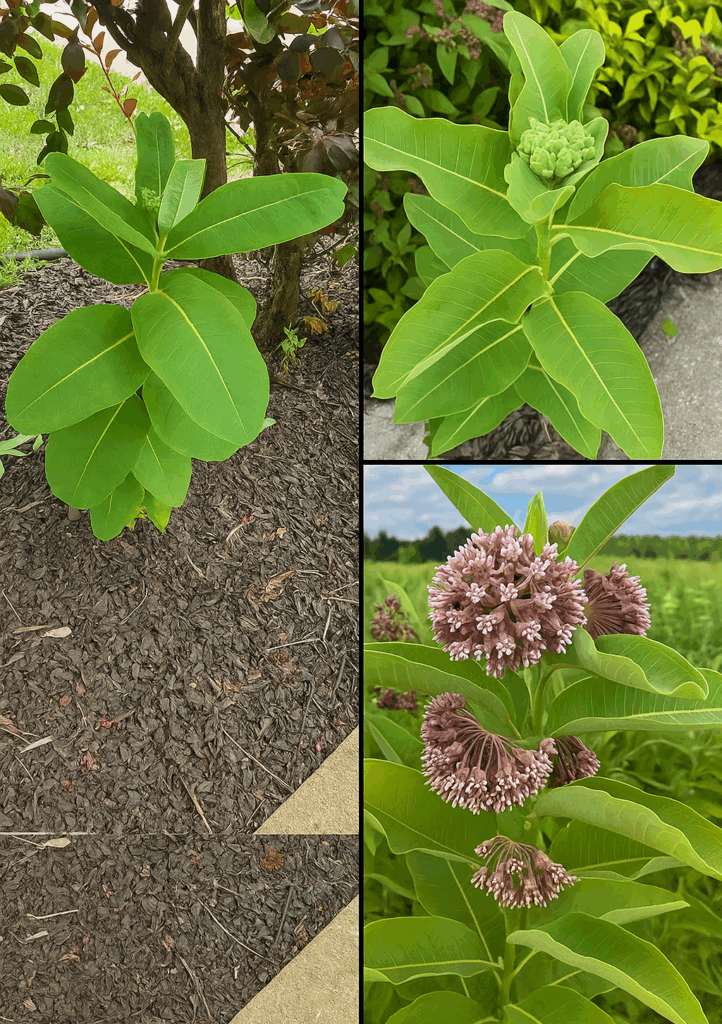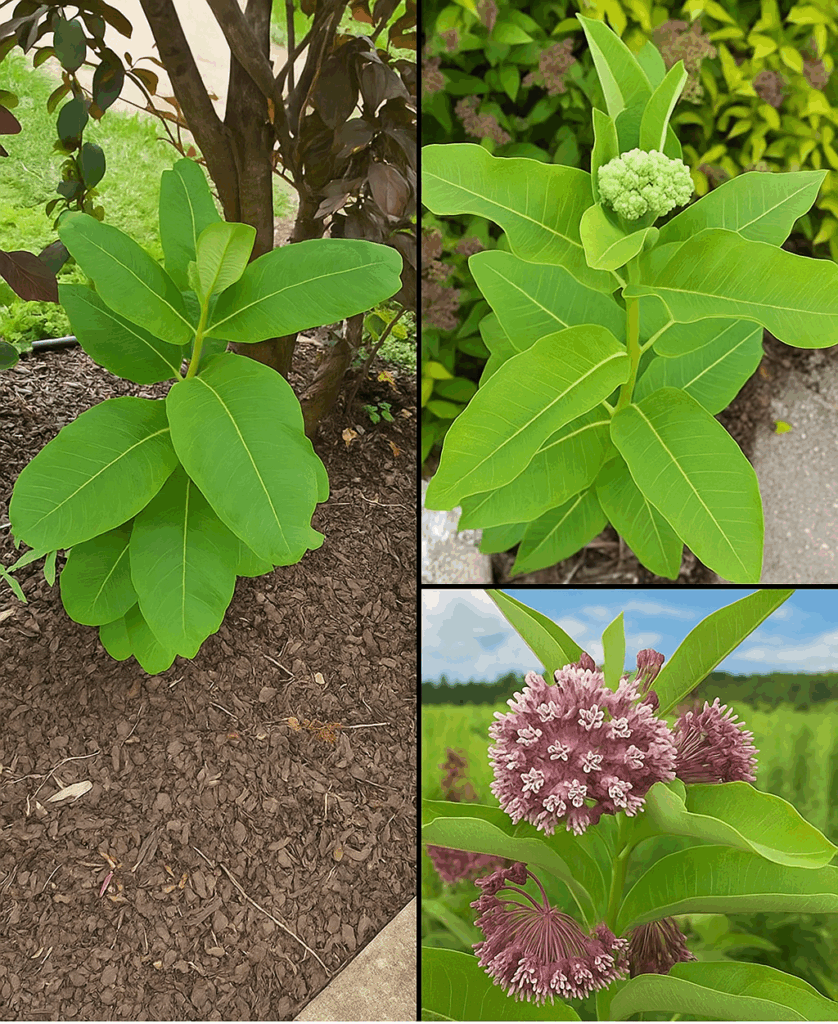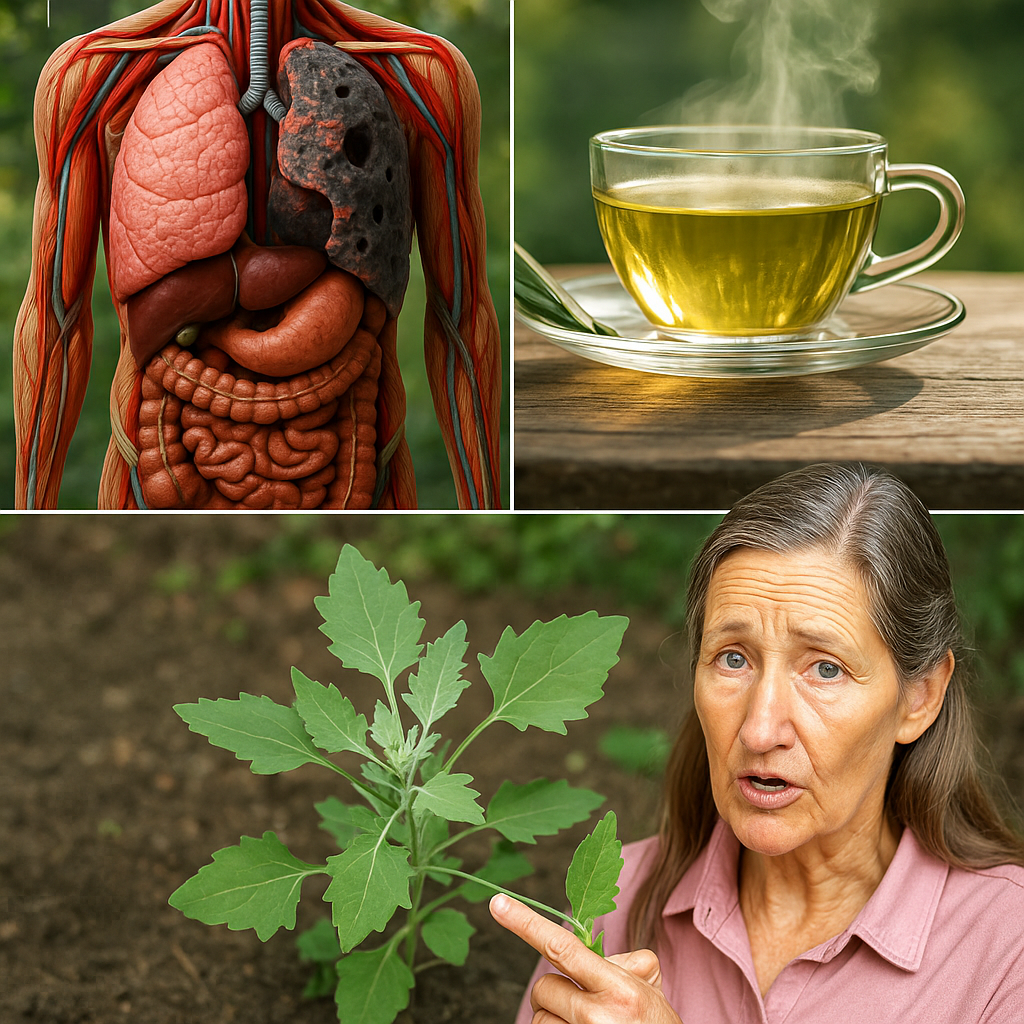🦋 If you spotted this tall, leafy plant in your backyard, you might walk past it thinking it’s just another weed. But look again—because what you’re seeing is Common Milkweed (Asclepias syriaca), one of nature’s most misunderstood treasures.

In the collage above, we see milkweed in various stages of growth. From bold green foliage to its signature clusters of purplish-pink flowers, this plant is more than just a pretty addition to your landscape. It’s a lifeline—for monarch butterflies, soil health, and even traditional herbal healing.
Let’s uncover the quiet brilliance of this native North American wild plant and why more people are now choosing to grow and protect it.
🌱 What Is Common Milkweed?
Milkweed gets its name from the milky sap that oozes from its leaves and stems when broken. It’s a hardy perennial that thrives in sunny fields, roadsides, and gardens. Its thick, oval-shaped leaves grow in opposite pairs, and its globe-like flower clusters bloom in summer—emitting a sweet, vanilla-like fragrance.
But its role in nature goes far beyond aesthetics.
🦋 Why Milkweed Is Vital for Monarchs

This plant is the sole host for monarch butterfly caterpillars. Monarchs lay their eggs exclusively on milkweed leaves, and the caterpillars feed on them until they are ready to form their chrysalis. Without milkweed, monarchs cannot reproduce.
By planting or protecting milkweed, you’re actively contributing to the survival of one of the most iconic and endangered migratory species on Earth.
💪 Medicinal and Traditional Uses of Milkweed
While modern medicine treats milkweed with caution, Indigenous tribes and herbalists have long appreciated its powerful properties.
In traditional remedies, different parts of the milkweed plant were used to:
- Support lung health and ease breathing
- Stimulate digestion
- Soothe warts, boils, and rashes when used topically
- Act as a mild diuretic or expectorant
⚠️ Note: Milkweed contains cardiac glycosides and should never be consumed raw or without proper preparation. Always consult a qualified herbalist or healthcare provider before internal use.
🌼 Milkweed Flowers: Fragrant and Full of Life
As shown in the bottom-right image, the flowers of common milkweed are not only beautiful, but buzzing with bees, butterflies, and beneficial insects. They:
- Support pollinator populations
- Offer nectar to honeybees and native bees
- Attract hummingbirds during peak bloom
This makes milkweed a perfect choice for pollinator gardens or rewilding projects.
🌾 Growing Milkweed in Your Garden
Contrary to popular belief, milkweed is not invasive when planted in appropriate spaces. In fact, it’s a valuable native plant that enhances biodiversity and requires little maintenance once established.
How to grow milkweed:
- Choose a sunny spot with well-drained soil
- Sow seeds in fall or cold-stratify them before spring planting
- Water regularly until established
- Avoid pesticide use—milkweed thrives best chemical-free
Once mature, it will return year after year, offering beauty and life to your garden ecosystem.
💡 Bonus: Milkweed for Eco-Innovation
Beyond gardening and wellness, milkweed fibers have been explored for:
- Natural insulation
- Oil absorption in environmental cleanup
- Sustainable textiles and fillings
Even the fluffy silk from its pods is being tested as a down alternative for pillows and jackets!
♻️ A Plant That Gives More Than It Takes
In an era when ecosystems are under pressure and pollinators are in peril, milkweed stands out as a humble hero. It nourishes monarchs, heals soil, supports pollinators, and even connects us to ancient herbal traditions.
🌟 So next time you see this “weed” rising confidently in your garden or along the roadside—pause. Celebrate it. Because sometimes, the most powerful plants are the ones we’ve overlooked the longest.
🌼 Plant it. Protect it. And let milkweed bring wild beauty and balance back to your world.


